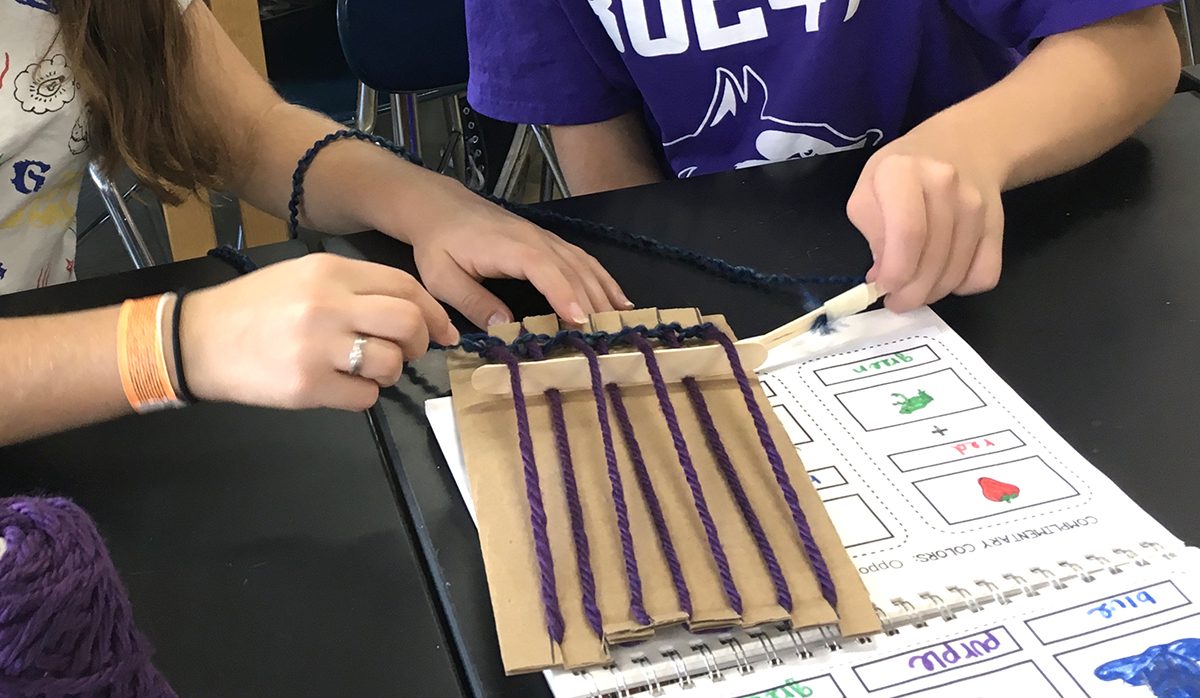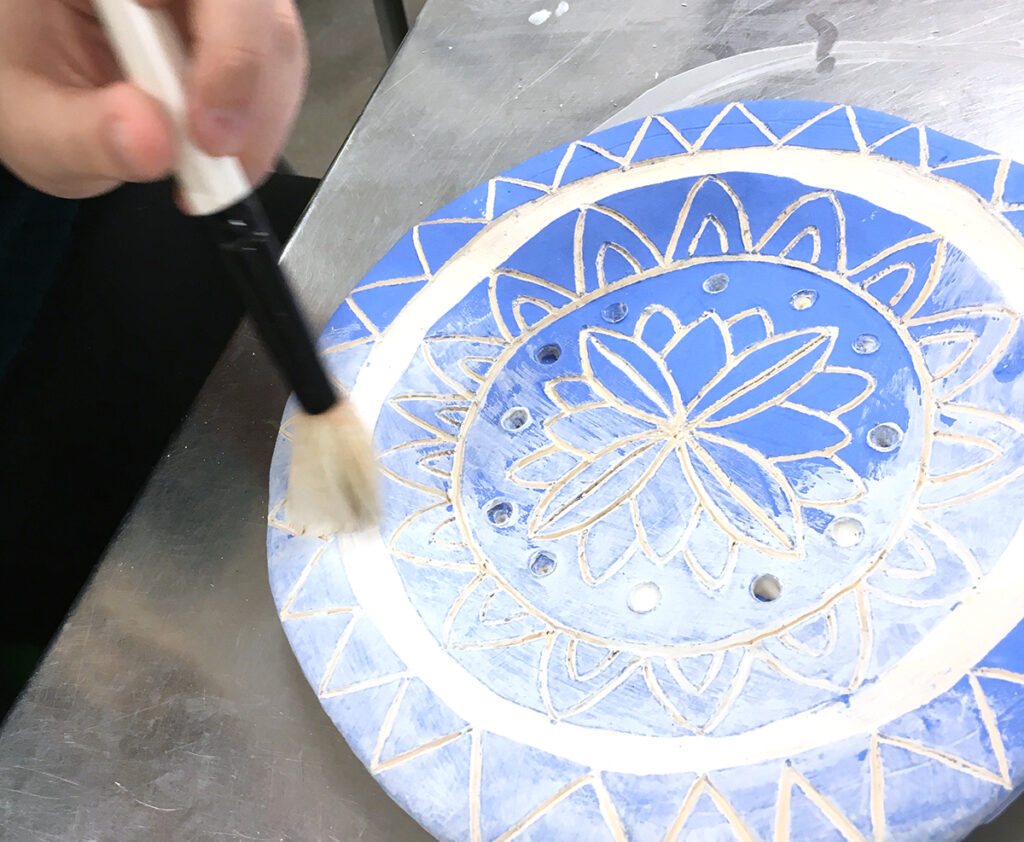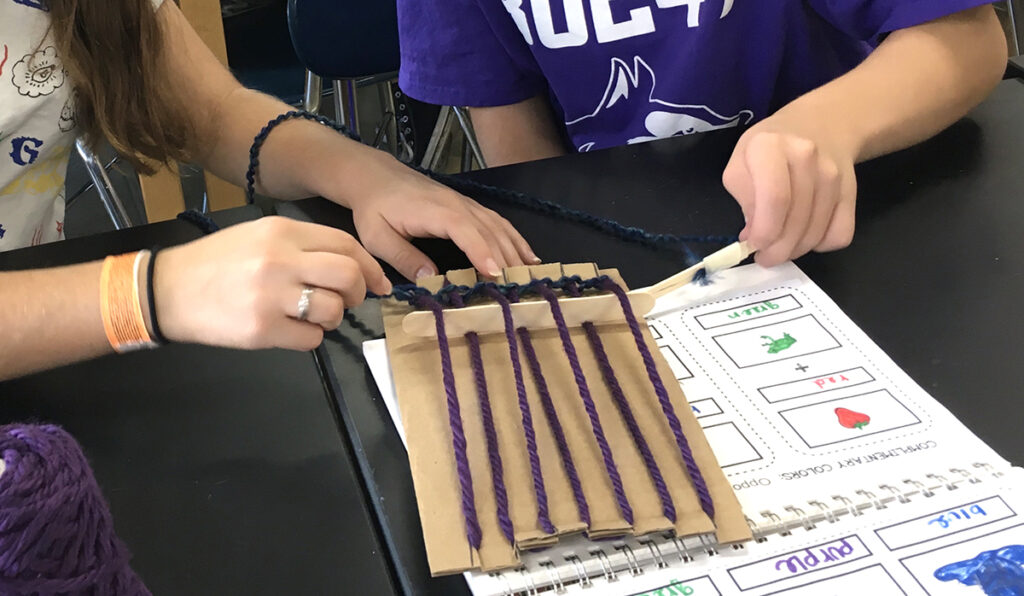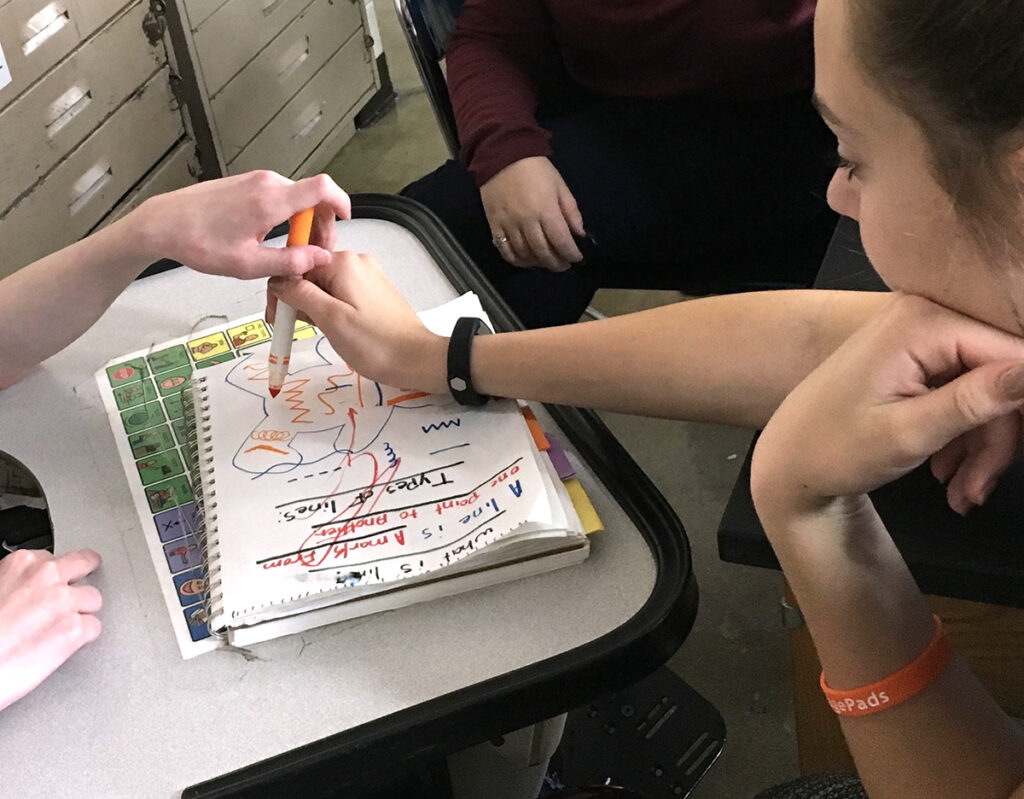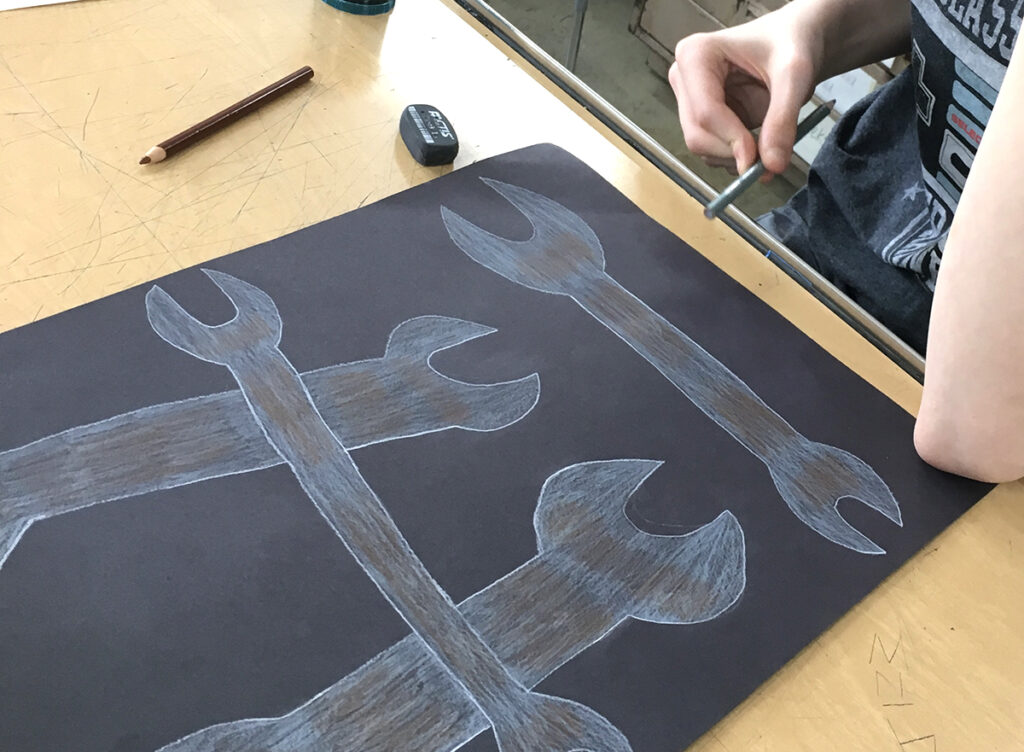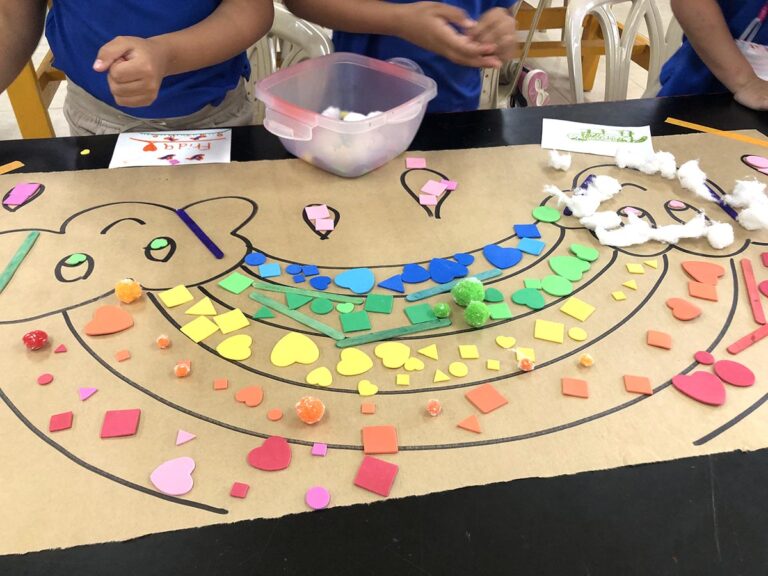The art room is a magical place where we see all levels of learners together. We often provide a haven for struggling students to shine. Unfortunately, our classroom can also quickly become overwhelming or anxiety-ridden for others. Some students have invisible or hidden disabilities, whereas others have disabilities that are more easily identifiable. Some students spend most of their day in a self-contained classroom with one-on-one aides but fully engage in our art room independently.
When considering ways to modify lessons and adapt the classroom for students with disabilities, it can be tricky to know which supports to provide and when to provide them.
Let’s expand our understanding of accommodations and modifications and take a look at five strategies that will not compromise your curriculum’s rigor.
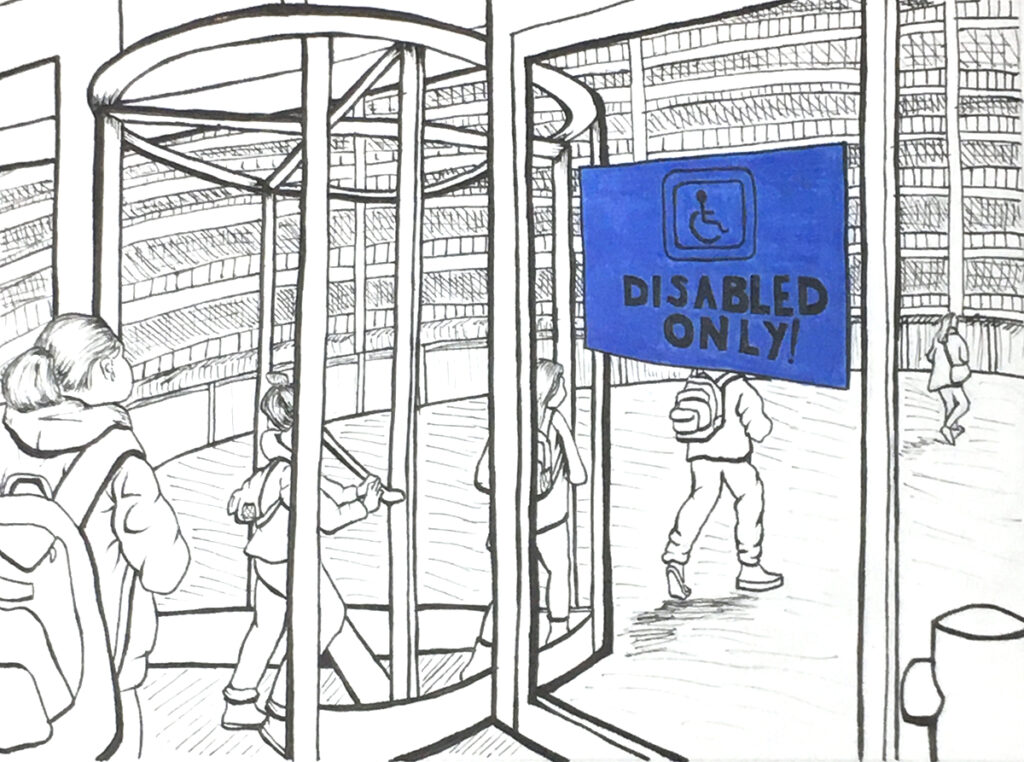
Accommodations and Modifications
When we look at our diverse learners, we need to consider what accommodations or modifications they may need in our classroom. Under the Individuals with Disabilities in Education Act (IDEA), a student may qualify for a Section 504 Plan or an Individualized Education Plan (IEP) that outlines accommodations or modifications based on specific learning needs. These are put in place by law to level the playing field. Learn more about IEPs with this PRO Pack on Understanding and Implementing IEPs.
Accommodations are put in place to support how a student accesses their education to offset their challenges. Examples of accommodations in your classroom might be extended time on assignments, providing visual step-by-step directions, or wiping down all tools and tables prior to student use. These accommodations do not change what the student is learning but rather how they access the materials or content.
Modifications come into play when a student cannot access the educational content or materials due to a disability. Examples of modifying your lesson might look like paring down the outcomes or providing alternative materials—modifications impact what a student is expected to learn or produce.
Adaptive Art Strategies
When working with students with disabilities, it is important to address their needs without losing the rigor of your curriculum. Adaptive art strategies are specific ways we can adjust our teaching through the classroom environment and materials. The goal is for all students to demonstrate mastery of concepts and create meaningful artworks.
When planning adaptive strategies, collaborate with your classroom aide or paraprofessional, special education colleagues, the student’s case manager, or other support team members. These colleagues will know the best ways to support your students! Check out this PRO Pack on Collaborating with Paraprofessionals for additional ways to team up with your colleagues.
Here are five adaptive art strategies you can implement now to provide equal access and opportunity for all students.
1. Create visual aids to help students with friendly reminders.
Visual aids help all students, not just students with a disability. Your daily routines, classroom expectations, and step-by-step instructions are great topics to turn into visuals—select key procedures to display as visual aids, so your classroom stays uncluttered yet visually stimulating.
Note these simple guidelines as you compose your next visual aid:
- First, keep sentences short and sweet.
- Use one image per sentence that portrays the action.
- Insert lots of leading (the space between lines) for students to write in large print on worksheets.
2. Provide flexibility with materials and tools.
Many of our students with special needs struggle with sensory processing as well as fine motor skills. We can adapt materials and tools, like the examples below:
- Create a sensory bin or station where students can experience each texture before choosing one for their artwork.
- Purchase or construct physical adaptive tools for fine motor needs, such as bulbous brush handles for students who struggle with grasping skills.
- Offer various tools for students to choose from, such as glue sticks, jumbo glue sticks, purple glue sticks, and liquid glue.
3. Increase focus with a behavioral incentive chart.
Focusing in the art room takes a lot of stamina! There is a lot of external stimuli, from touch to visual to auditory. Some students spend hours creating, while others struggle to stay on-task for five minutes. A great way to increase engagement and reduce distractions is with a visual incentive chart. An “If this, then that” chart helps the students see the incentives they will receive when they complete a whole task or parts of a task.
Work with your support staff to identify appropriate and positive incentives for each specific student’s needs and interests. Incentives can range from a punch on a positive points card to five extra iPad minutes. Break down the incentives into manageable goals to prevent students from shutting down.
4. Prevent overwhelming students by giving limited choice options.
Choice boards lay out several ideas on a particular concept or topic for students to select from, usually in a grid format. While these graphic organizers are great for students who thrive on their own interests, other students can struggle when offered too many options. It can create sensations of overwhelm and leave the student feeling stuck. Instead of such an open-ended option, provide two concrete paths. For example, instead of a “free draw” option, try giving a specific prompt, media, or expectation. A more appropriate choice could be “Create a family portrait using markers or watercolor paint,” or “Use markers to draw your best friend or your favorite food.” These two distinct choices still give the student many options to explore their interests without overwhelming them with a blank canvas.
5. Partner students with a positive peer role model to demonstrate steps.
Students will need varying levels of instructional support. Some students will be able to follow a visual task sheet that outlines each step, whereas other students will need to be given one step at a time. This does not mean that the student cannot follow complex steps or create meaningful artworks. Try partnering the student with a positive peer role model who can complete the step for themself and then help their partner. This is a great way to provide instructional support, plus it reinforces the concepts and skills to the positive peer role model.
Every student, no matter the disability, is capable of making complex and meaningful artwork.
When accommodating and modifying your lessons for students with disabilities, make sure you are not drastically changing the content you teach. While students may have a varying level of development, maturity, or cognitive awareness, this does not mean a ninth-grader should be creating a kindergarten paper plate project while everyone else works with oil pastels. Unless, of course, you are using the paper plate as an adaptive material!
Keep the concepts you teach the same no matter who the student in your class might be. For example, if you are teaching composition, every student should learn those same compositional techniques. The depth and level at which the student demonstrates those compositional techniques may look different, but they will still apply them to their artwork.
Our classrooms provide a safe place for all artistic voices to be expressed and nurtured. When we learn how to support students of all types with adaptive strategies, we convey that every student is unique and whole. Every student deserves a level playing field as we continue practicing collaboration, problem-solving, and communication skills. Making mindful decisions in our classrooms that do not compromise the rigor of our curriculum will allow every student an opportunity to shine.
What is an innovative adaptive strategy you have used that was wildly successful?
Which adaptive strategy are you excited to try out with your students?
Magazine articles and podcasts are opinions of professional education contributors and do not necessarily represent the position of the Art of Education University (AOEU) or its academic offerings. Contributors use terms in the way they are most often talked about in the scope of their educational experiences.
